On any occasion that an activist, academic or political commentator invokes remembrances of South African apartheid to deliberately draw parallels with the Israeli-Palestinian conflict, they can expect an immediate and exacting rebuke.
However, launching his new collaborative book in East Jerusalem on Saturday night, esteemed Israeli historian Ilan Pappé abandoned any pretence of restraint and made the intrepid and timely case that the use of apartheid descriptors when engaging in Israel/Palestine discourse should be an indisputable starting point, not an equivocal theory up for debate. The collection which Pappé has edited, ‘Israel and South Africa: The Many Faces of Apartheid’, has assembled contributions from a wide range of respected academics, politicians, journalists and lawyers, that are all rooted in a fundamental position that recognises that the relationship the Israeli state has manufactured with its Palestinian subjects, in Israel and the occupied territories, equates to a form of apartheid.
Pappé was joined in the scenic garden of the French Institute by award winning, Nazareth-based journalist, Jonathan Cook, whose contributory chapter in the book – “Visible Equality as a Confidence Trick” – focuses on the “forgotten Palestinians” who make up 20% of the citizens of Israel.
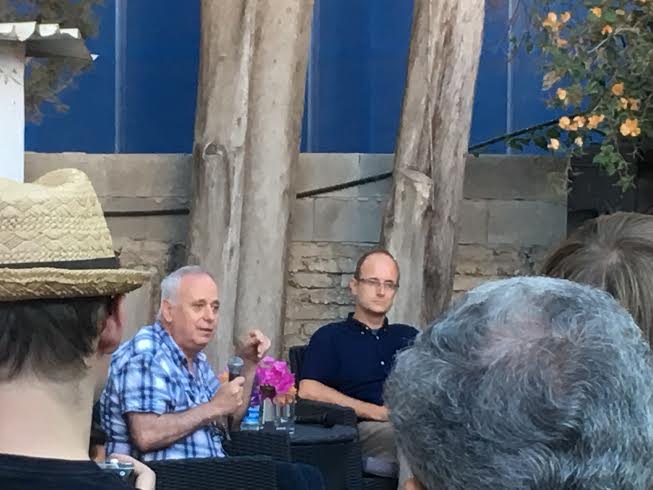
Providing introductory remarks to the vast audience that had gathered in the garden, Pappé commented on the necessity of ensuring the paradigm shift, which has been evident over the last 10 or 15 years within marginal spheres of academia and peripheral political systems around the world, gain credence among those Western elites who actually hold power.
“For about 40 or 50 years in many places like this – institutes, universities, academic centres, media and so on – there was one dominant way or paradigm through which the conflict in Palestine had been analysed and this was the paradigm or model of a conflict between two national movements,” he said, explaining the orthodoxy in western thought, “there is one country for which two national movements are fighting for; they have equal right to the land, they have an equal attachment to the land, and hence what you need is to find a compromise that would answer the aspirations of both national movements, given the fact that they both have a justified claim to the land.”
Given that this is the central paradigm for peace that the Quartet (United Nations, USA, European Union and Russia), the main stream media and influential “peace” politicians continue to use, Pappé considers it entirely unsurprising that the main outcome remains the unworkable two-state solution.
What the book endeavours to do, Pappé expounded, is to expose this manifestly deceitful paradigm, and establish a new paradigm, already common amongst activists and marginalised academics, that relates to the reality on the ground; one of “settler-colonialism and its connection with apartheid.” In essence, the conflict is not between two competing national movements with an equal claim to the land, but between a movement of settler-colonialists and a native people.
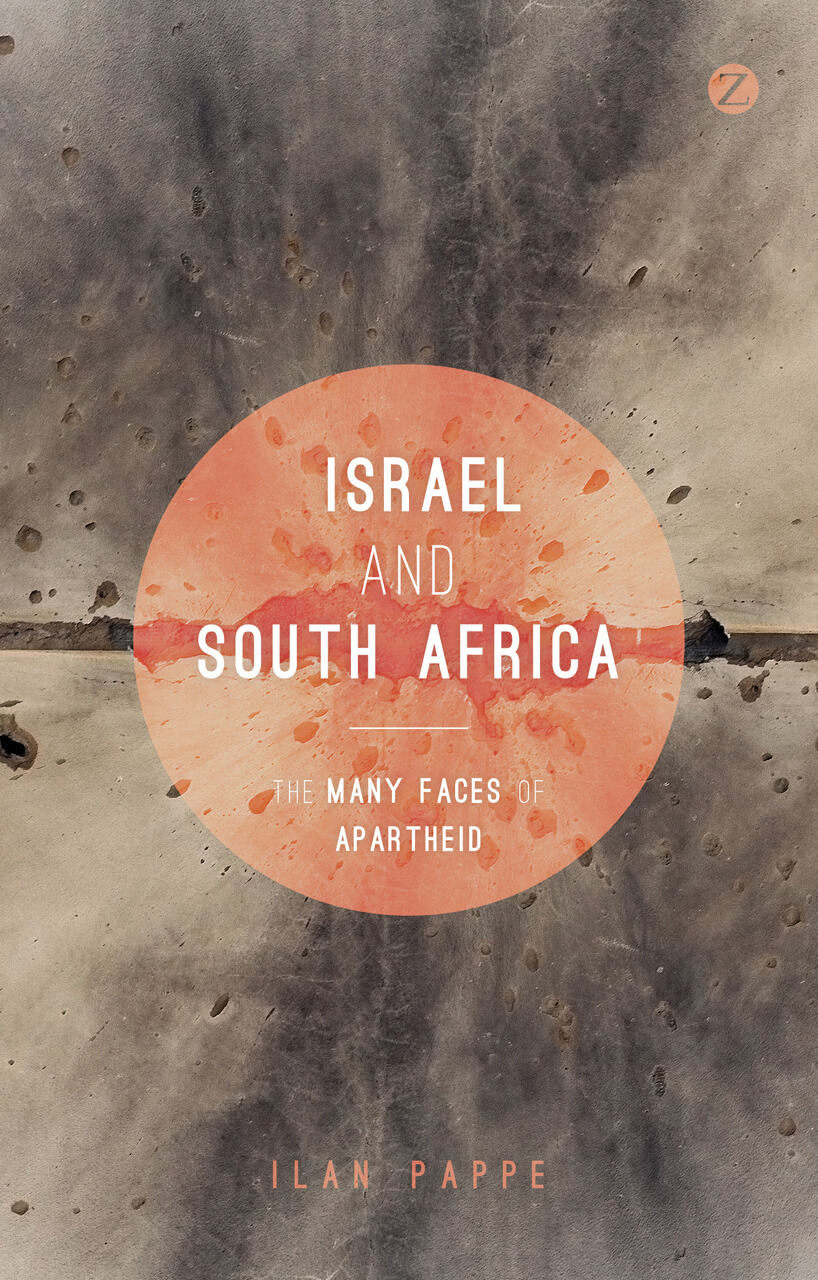
The theoretical framework for the book is formed around this concept and the belief that the natural consequence of settler-colonialism is a system of apartheid which ensures the native people are separated from the settler race.
This depiction of Zionism as a settler-colonialist programme and the state of Israel as an apartheid state also determines the resolution mechanism, said Pappé, facetiously asserting that the notion of the two-state solution may have “produced a lot of Nobel peace prizes, and mountains of documents, and hundreds of academic careers,” but it has provided “nothing on the ground itself!” Using the new paradigm of settler-colonialism, the resolution is simple: the decolonization of Israel/Palestine and the substitution of the Israeli regime with democracy and equality for all.
Pappé was careful in his attempts to justify this new language and the narration the book attempts to proliferate. “Saying that a movement is a settler colonial movement does not mean that I demonize them beyond any repair. No, settler-colonialism is an historical fact,” he said, citing the cases of USA, Australia, New Zealand and Latin America.
The similarities between Israel/Palestine and apartheid South Africa are more striking in the means of what Patrick Woolfe labelled the “logic of elimination” – the method the settler-colonialists used to turn their respective new homes into homelands and rid them of the native people. In the above cited cases, the answer was genocide, but in South Africa and Palestine alternative crimes against humanity were used; ethnic cleansing, dispossession, apartheid.
“The logic of elimination in Palestine was implemented in the ethnic cleansing of Palestine in 1948. This was not a coincidence of war. This was not the result of a war. This was the conclusion of a systematic planning by the settler-colonialist movement of Zionism that wanted to get rid of the native Palestinian population,” explained Pappé. Appearing to be inextricably linked, in the very same year the settler community of whites in South Africa decided to institutionalize the apartheid system there. “They were using these alternative means [to genocide] in South Africa until the fall of apartheid, they are still using these means today, all over Palestine – not just in the West Bank, not just in Gaza,” he concluded; both settler-colonialist movements in this comparative study decided to institutionalize, not through genocide, but through a state apparatus.
The book attempts to analyze this apartheid analogy, its application in Israel/Palestine and its use as a comparative model with apartheid South Africa, through exploring these concepts of language and narration, historical similarities and differences, and basic legal and legislative comparisons. Resolution to the most significant moral debate of our time will only be sought by identifying and understanding the clear implications for international law, activism and policy making that this more accurate paradigm delivers.
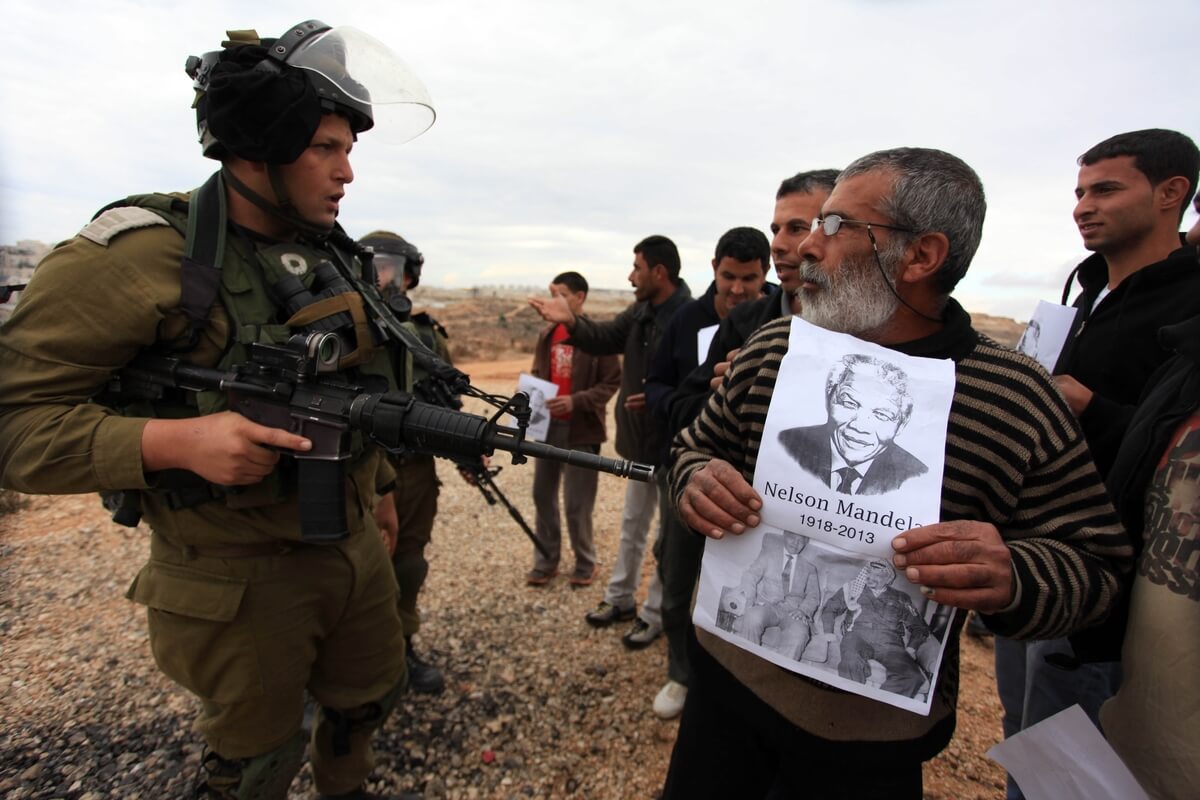
Against this comparative framework, Jonathan Cook’s seminal argument proposed in the book concerns the Palestinian citizens of Israel and their “artificial separation” from those Palestinians in the Occupied Territories. His major conclusion is that separation – or apartheid – and inequality based on ethnic belonging has been codified in Israeli law and therefore protected from international condemnation, but it still very much exists.
Commenting on his own contribution, Cook gave a bold and perceptive analysis that attempted to deal with two of the foremost criticisms of the apartheid comparison with South Africa: first, that the clear separation of ethnicities in South Africa does not exist in Israel, and secondly, that Israel’s Palestinian citizens are afforded a democratic vote that was not afforded to blacks in South Africa.
“Scholars of apartheid South Africa drew a distinction between two aspects of the regime, what they called “petty or trivial apartheid” and what’s known as “grand or resource apartheid”. For most of us the essence of South African apartheid was separate park benches, separate restaurants, separate toilets, separate buses and so on.”
But the scholars “noted that the main goal of apartheid was to restrict the benefits of the state’s key resources, in the case of South Africa that was the land, water and mineral wealth to the white minority,” he explained, “in short, visible segregation was a particular form South African apartheid took, but the content of the apartheid system, its strategic objective was related to resources not park benches.”
By identifying the fact that in Israel “93% of the land is designated as belonging to a global Jewish nation, not the country’s citizens” and recognising that “water as a resource for use in agriculture is also reserved for Jews, and therefore commercial agriculture and the cheap water it depends on are only available to Jews,” through the exploitation of admissions committees that ensure only Jews can access these communities, Cook endeavoured to illustrate that the apartheid evident in Israel is a different form to that which was dominant in South Africa, yet the substance remains the same.
Elucidating, Cook offered that although the physical segregation of the black majority in South Africa was necessary because it created a physical difference and contributed to a sense of security, this is not necessary with the Palestinian minority in Israel. “Israel practices some visible segregation; there are separate living spaces, separate towns, villages, communities, and also separate education systems,” explained Cook, yet this separation serves a different role, “to create a sense of emotional separation between the Jewish and Palestinian populations by keeping members of the two populations apart during their formative years, during childhood, it’s possible to maintain and entrench a tribal and antagonistic identity on both sides.”
Regarding the voting rights of Palestinians, again Cook asserted that this difference relates to the form of apartheid, not to the substance.
“The different electoral considerations reflect the different demographic circumstances the two states found themselves in. In South Africa, the oppressed black population was a large majority, in Israel the Palestinian population is a relatively small minority. South Africa could not afford to give the vote to the black population because it would have risked empowering them. Israel can give its Palestinian citizens a vote because absolutely no power accrues to them as a result.”
Those that oppose the apartheid comparison on these grounds want us to overlook the historical context, said Cook, that the ethnic cleansing of 1948 effectively gerrymandered Israel’s political constituency.
Finishing, Cook attempted to prove that by ignoring the unifying nature of apartheid facing all Palestinians under Israeli rule, Israel is afforded a platform to “claim its policies in the occupied territories are driven by security considerations rather than goalless systematic dispossession and resource theft.”
His compelling peroration derided this approach, “If there’s no apartheid in Israel then maybe Israel is right, the regime it has created in the occupied territories is a necessary response to security threats rather than an integral part of an all embracing apartheid system. I reject that idea,” he declared, “Rather, demonstrating that Israel is practicing apartheid inside its recognized borders is a vital step to confirming that it is also operating an apartheid regime, or worse, in the occupied territories.”
Drawing on expertise from a range of different journalists, lawyers, political scientists and historians from within Israel and the occupied territories, this book will serve as an important tool in advancing the settler-colonial paradigm and the apartheid analogy. This, Pappé argues, will assist with the unblocking of the failed peace process and prepare the ground for the possibility of a resolution.
“Any peace paradigm that retains Israel as a Zionist state has no chance in the world of succeeding,” said Pappé, summarizing, “Similarly to the way that we had to get rid of apartheid, we have to get rid of Zionism before we talk about reconciliation. No other solution will work in this place.”

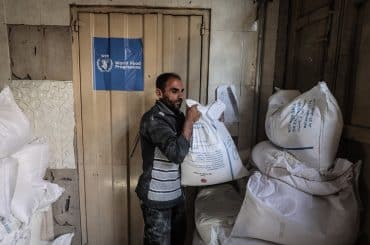
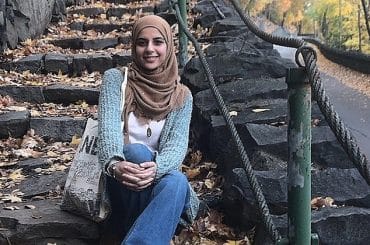
Why is it so necessary to use comparisons, or the apartheid comparison in particular, in order to see what the situation in Palestine is?
False premise that its two competing national movements with equal claim to the land which would make it Civil War
.
1 Mandate of Palestine was superseded with UN Charter, Chapter XII, Article 80 Terms of UN Trusteeship November 29th 1947 UNGA 181
2 There is no one-state solution: Its a Two_State UNGA 181 Resolution
2.1 UNGA 181 is in effect
https://www.facebook.com/photo.php?fbid=1052233094866491&set=a.513375965418876.1073741833.100002394314450&type=3&theater
.
3 Israel_Palestine Conflict is not a Civil War
3.1 International Law Documents
https://www.facebook.com/photo.php?fbid=791697980920005&set=a.513375965418876.1073741833.100002394314450&type=3&theater
.
4 Sionist Fraud that its Civil War pressed by Abbas is how Abbas has been corrupted:
4.1 VC_LOT Article 47 vis-a-vis Abbas powers https://www.facebook.com/photo.php?fbid=901471446609324&set=a.513375965418876.1073741833.100002394314450&type=3&theater
.
5 Any Israel_Palestine Peace Agreement shall be qualified by Vienna Convention on Laws of Treaties Article 53
5.1 VC_LOT Article 53 jsu cogens
https://www.facebook.com/photo.php?fbid=1052233094866491&set=a.513375965418876.1073741833.100002394314450&type=3&theater
Some ridiculous and purely imaginative statements from these so-called ‘highly respected’ (as in, highly respected by who?)
1) that pappe is so highly esteemed by his supporters is a far cry from universal respect. It’s like saying David duke is a highly respected former politician and author. Uh huh.
2) cook just pops off his premise that the main goal of South African Apartheid regime was to restrict assets of black and colored folks – not separation per se . Excuse us, wtf is he prattling on about? The most ridiculous and bogus analysis off SA apartheid put forward yet. Would love to put cooks premise to the black leaders forcibly separated let alone the millions of non-insurgents. And all to promote and entity bogus connection to Israel. Sweet.
3.) Lol. I’d like to see the law referenced whereby water is owned by the state and to be legally used by Jews only. What garbage. And if their talking about Judea and Samaria the statec water apparatus provides more, not less then the allotted amount because literally tonnes and to tonnes of Palestinian water is wasted through bad lines, infrastructure and all out corruption. The Palestinian citizens of West bank already know this but don’t care of some crazy Jew from Israel wants to tout their cause.
4
Judging by the many comments we get here from Zionists it seems literacy amongst them and good eyesight appears to be a common affliction.